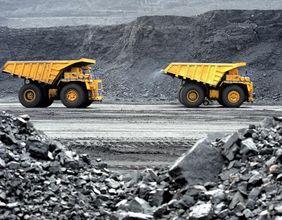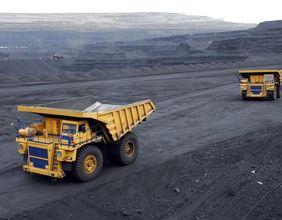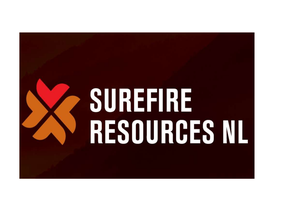On 14 September, in an unprecedented set of events, there were synchronised drone attacks on two vital oil installations inside Saudi Arabia, owned by state-owned company Aramco, imperilling the output capacity of the country. The attack raised the risk of a disruption in world oil supplies as the damaged facilities process the vast majority of the crude output of the country, as analysts predicted that around half of the production would be impacted, amounting to 5 per cent of the total supply to the world. The attacks, which were claimed by Houthi rebels based in Yemen, hit the Khurais oilfield and Abqaiq, a vital crude processing centre.
However, amid a standoff between the United States and Iran, many policy experts in the US and Saudi Arabia accused Iran of perpetrating the attack, which immediately escalated tensions in the Persian Gulf. The uncertainty surrounding the attack increased as many questions continued to persist, including how the Houthiâs managed to hit facilities deep in Saudi territory located some 500 miles from Yemeni soil, where the drones were launched from, and how the rebel group managed to get hold of such advanced technology.
The attack knocked off 5.7 million barrels of daily crude production, and it was reported that Saudi Aramco had 35 to 40 days of supply to meet contractual obligations, as it emerged that the country was now looking at weeks without full crude and gas production capacity. No clear signals were received by the market as to when the Kingdom would be able to restore output towards the 9.8 million barrel a day level of before the attack, leading to panic amongst investors, as production was halved for the foreseeable future over the weekend and raised the geopolitical risks.
As a result, on 16 September 2019 (Monday) at opening of the price of Brent crude in the futures market, the international oil benchmark, registered a historical increase, gaining as much as 20 per cent to above USD 71.00 a barrel, before settling at 14.6 per cent higher to USD 69.02 a barrel. Since January 1991, when the US launched an attack on Iraqi forces in Kuwait, the intra-day rise was the most significant move in percentage terms, and the closing price registered the most substantial increase since 1988. During the day, West Texas Intermediate, the benchmark price in the US, gained 14.7 per cent to USD 62.90. After the US President Donald Trump approved the use of emergency oil stockpile, which has been maintained since the 1970s after the embargo by the OPEC, to ensure stable supply and the relatively less belligerent response of his administration, the market calmed, and crude prices retreated.
The equity market, on fears of further escalation and the impact on the health of the world economy, also took a hit, as the FTSE 100 index, which is a share index that tracks 100 companies with the highest market capitalisation that are listed on the London Stock Exchange, slipped by 0.6 per cent, while the FTSE 250 index, the index of next 250 biggest companies, declined by 0.7 per cent. As the market was already beset by prior issues like the threat of slowing global economy, Brexit and trade war, worsening geopolitical landscape further deteriorated the sentiments of investors. Except for the energy and utility sectors, losses were recorded across the board, with the airline group falling across the European markets.
A gain of 4 per cent in BP PLC (BP) and 2 per cent in Royal Dutch Shell PLC (RDSA) helped to keep a lid on losses, Asia-facing financial shares and miners also weighed on the main index, as the mining index was lower by 1.6 per cent and banking index lost 1.7 per cent. This was exacerbated by data from China which showed growth in industrial production was at its weakest for 17-1/2 years, signalling deepening slowdown in the country. The travel and leisure index that also houses airline stocks fell by 1 per cent, while the FTSE oil & gas index recorded its best day in seven months by rising 2.8 per cent. As oil exploration-focused groups were likely to benefit from disruption to existing channels and supply shortages, Premier Oil (PMO) and Tullow Oil (TLW) gained the most on the index.
Markets around the world were affected as well by the attack and the demand for safe-haven assets rose. Airlines, which are prone to rise in costs due to the increase in crude prices, pulled back while oil producers stocks across the globe climbed. The Nasdaq Composite was down by 0.3 per cent, and the S&P 500 finished the day lower by 0.3 per cent. The only major sectors in the green on Monday were energy and utilities, which rose by 3.3 per cent and 0.1 per cent respectively, amid a broad-based sell-off of risky assets. In Europe, Xetra Dax of Germany fell by 0.7 per cent while the broader European index Stoxx 600 fell by 0.6 per cent. The Hang Seng index in Hong Kong was down by 0.8 per cent. As was expected, prices of gold, a popular haven in times of market stress, increased by 0.6 per cent to USD 1,497 a troy ounce, along with the prices of treasuries, as US 10-year yield was down by 5.6 basis points at 1.845 per cent.
On 17 September, as investors still weighed up the implications of a major attack on the oil infrastructure of Saudi Arabia, European markets opened lower in early London trading and oil was down slightly. The FTSE 100 index traded higher most of the day before slipping into the red in the afternoon session, while West Texas Intermediate, the US benchmark, slipped by 0.9 per cent to USD 62.37 and Brent crude, the international oil marker, was down by 0.7 per cent at USD 68.58. Investors reckon that the reactions of Washington and Riyadh â whether a military operation or calculated dolomitic efforts â and the extent of repairs needed at the Abqaiq facility would dictate the near-term direction of crude prices, though it has been reported that output could take months to return to normal.
Much is still unclear about the attacks, and this has driven a sense of uncertainty amongst the investors. Till now, the US administration has not provided any proof that Iran was behind the attacks, though the Secretary of State Mike Pompeo had accused Iran of launching the attack. However, the Saudis themselves refrained from pointing the finger directly at Iran, and the US President Donald Trump has adopted a more cautious stance, along with the Europeans, who have urged concerned leaders to consider all factors before making any decision carefully. The guarded position adopted by Europeans also reflects their intentions to salvage the nuclear deal on which the Trump administration reneged, leading to tensions in the region. The allegations on Iran has been refuted by them, even though Saudi came to a conclusion on Monday that the attacks were not caused by the Houthis or launched from Yemen, and US official said the attacks did not originate from Iraq.
The market seems to be in very uncertain territory, where predicting the next move by government authorities would be very difficult, especially given the fact that the key decision-makers in this dispute are all headstrong and prone to taking risks. President Trump would have to be mindful of various permutations and combinations as the next presidential elections are due to be held in 2020. If he escalates the conflict, oil prices are definitely going to increase, which would hurt his voter base. But given his nationalist posturing which won him his voter base in the first place, he would have to give an appropriate response. Moreover, if it is concluded that Iran was responsible for the attack, it would become necessary for the US to intervene to protect its ally in the Middle-East. This all means that the world is set to witness a rollercoaster ride in the middle east, characterised by shocks and surprises, with an ability to lead to a full-blown military intervention. The ability of the US to engage in the military as well as the trade war is yet to be seen.






